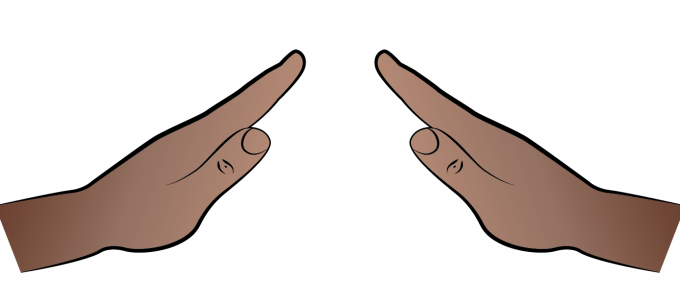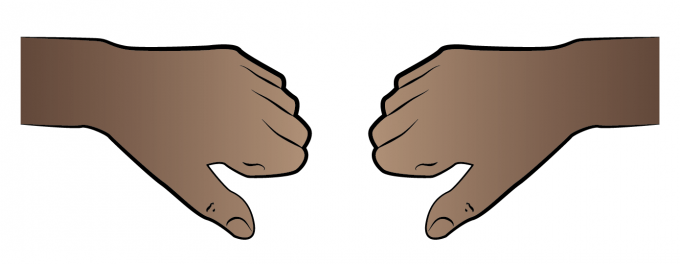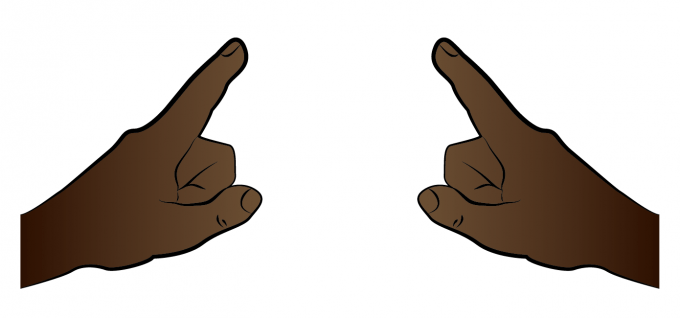Have you ever heard of Curwen hand signs and wondered what they’re all about? In this article, we’ll get down to the brass tacks of why and how and music teachers of all stripes should use this tool.

⬆️ Listen to the podcast above or keep on reading, whichever fits your style. ↙️
If you see Curwen hand signs from afar, you might think they look mighty odd. Music teachers and students move through these gestures smoothly and seem to have a whole other language for understanding pitch.
In a way, they do. But it’s a very simple one.
Anyone (yes, you!) can learn to use Curwen hand signs if they practise. Start by learning do, re and mi from the list in this article and practise using them in your lessons.
Then come back to this post when you’re ready to add another note. 😀
Why Hand Signs Are Useful
There are many reasons a teacher might consider adding Curwen hand signs to their teaching toolkit. For piano teachers, though, 2 benefits stand out to me above all others.
Kinaesthetic Engagement
Curwen hand signs give us a movement to go along with the verbal and the aural association. This means that we can get our students moving while they practise singing on pitch and remembering aural patterns.
The more we can make our students think, the more engaged they will be in their learning process. If that thinking is varied, their learning will be that much stickier.
Inner Hearing
One trick I love witnessing in a Kodály classroom is the phenomenon of an entire group of kids silently signing the solfa while they listen to a piece of music. This helps the students to concentrate on their own inner hearing, and it gives the teacher a visual to track the students’ comprehension.

My students don’t get to this stage with Curwen hand sign work in the small amount of time we spend on this in the piano studio. There’s just too much to do and we all have to prioritise.
But we can still use the hand signs for inner hearing in a smaller way. A simple way to bring this into your lessons is to sing or play a pattern and have your students sign it back to you.
If you’d like a framework for this, check out An Easy and Effective Ear Training Exercise for Piano Students.
The Curwen Hand Sign System
These are the basic Curwen hand signs. I prefer to do them with both hands most of the time so that is how they’re shown here, but you can also do them with one hand.
In the interests of keeping this guide clear and concise, I have only included 2 notes outside of the major scale. These are fi and si which are the sharpened 6th and 7th for the melodic minor scale.

Subscribe to updates and get the CURWEN HAND SIGN POSTERS
Enter your details to subscribe to the newsletter for piano teachers with information, tips and offers.
I hate spam as much as you do! I'll only send you information that's directly relevant to music teachers and you can unsubscribe at any time.
If you’re a member of Vibrant Music Teaching, you can download printable posters of the Curwen hand signs from the VMT Library to hang in your studio. Not a member? Sign up today and you’ll get instant access to this and many other solfa resources.
Do Hand Sign
Do is a loose fist.

Re Hand Sign
For re, close your fingers together and slant your hands upward.

Mi Hand Sign
Mi is an open hand with closed fingers, hands parallel to the floor.

Fa Hand Sign
Fa is like a thumbs down with the backs of your hands facing you.

Fi Hand Sign
Flip fa around to create the raised fi.

So Hand Sign
So is an open hand with closed fingers and your palm facing you.

Si Hand Sign
To change so into si, slant the hands slightly upwards. This is also sometimes shown with all the fingers open, or just the thumb away from the rest of the hand.

La Hand Sign
La is a loosely open hand and relaxed hand facing the floor.

Ti Hand Sign
For ti, point with the index finger towards the sky or your face.

The Story Behind Curwen Hand Signs
I’m not going to go into a full history of Kodály, solfa and Curwen hand signs here. But I do think a nod to the background is worth our time.
Sarah Ann Glover came up with the Norwich sol-fa method of singing when she was working with her Sunday school music students on a capella singing skills. Her Norwich sol-fa method was based on the system devised by Guido d’Arezzo from the ‘Hymn to St. John the Baptist’ but Sarah changed si to ti so that every note would begin with a different letter.
(Side note: If you want a beautiful book to introduce Guido to kids, check this out.)
The work Sarah was doing inspired John Curwen. He devised the hand sign system and helped to popularise the method by teaching it to other Sunday school music teachers.
Skyrocket your solfa work
The best way to learn how to use solfa with your music students is to follow step-by-step lesson plans. The Solfa Skyrocket course, exclusively for members of Vibrant Music Teaching, makes it super easy to get started with this fantastic ear training tool.
Not a member yet? Sign up today and get instant access to this and many other exclusive courses.
Do you use Curwen hand signs?
If so, how do you use them in your teaching studio? If not, do you plan to give it a try? Let us know in the comments.
If you like this post, you’ll love the resources and articles in the Ear Training section of my Music Theory page.


I love using Curwen hand signs with students when we do solfege singing and ear training! The public schools where I live are Kodaly-influenced, so it dovetails nicely with what my students have learned in their music classes at school. I have a giant floor staff that students can stand on and pretend to be notes. I sing tonic and dominant patterns in conjunction with the Curwen hand signs; then students have to sing and sign the pattern back while stepping on the correct lines and spaces. For example, I might sing “Do Mi Sol” (student echo), “Sol Fa Re Ti” (student echo), “Do Mi Do” (student echo) or other similar patterns that alternate tonic and dominant function.
Later, when I’m confident that students know how to sing these patterns on pitch with the correct syllables and use the correct hand signs, we do a Same vs. Different ear training activity. I sing two different tonic patterns (example: Do Mi Sol vs. Sol Mi Do) on neutral syllables, then students have to tell me if the two patterns were the same or different. If the pattern is different, they have to tell me why using the solfege syllables and Curwen hand signs. Later still, I have students sight-sing and even dictate tonic and dominant patterns that they have previously encountered in these floor staff and ear training activities.
I use them in my music group lessons as well as in piano one-on-one. I’m grateful for knowing Kodály especially now when teaching remotely as it makes it no problem teaching the beginner a new song. It’s the most beneficial thing I know for teaching.